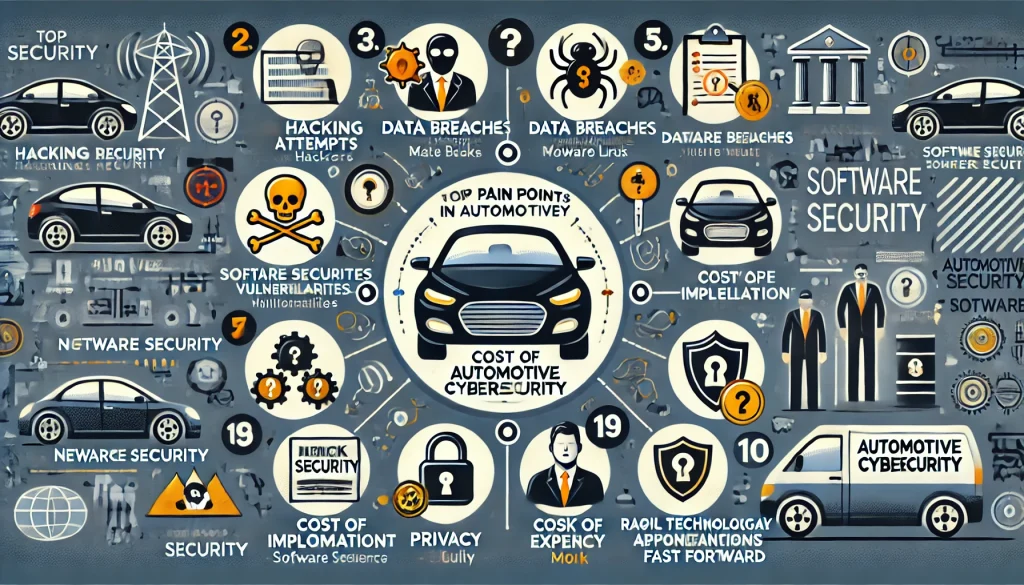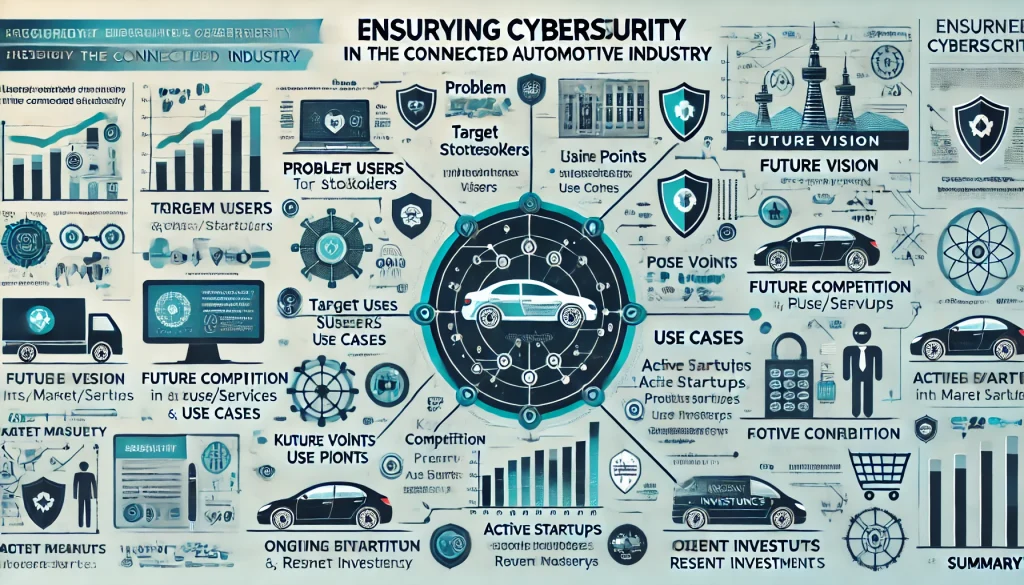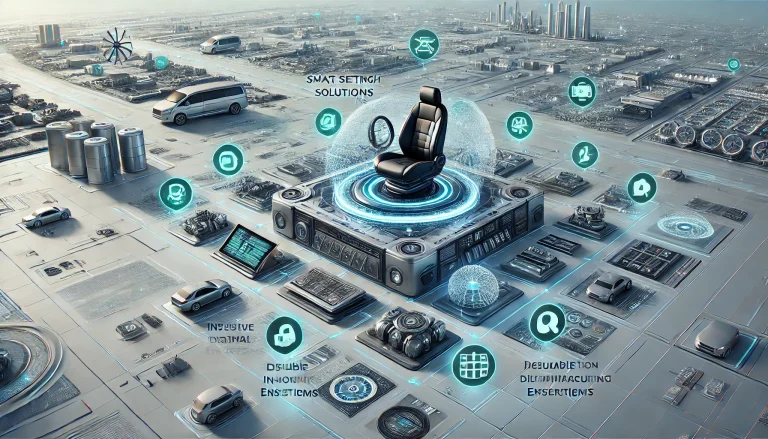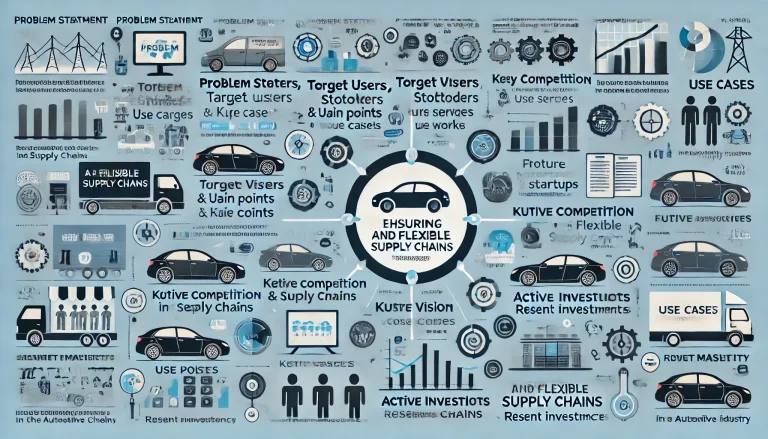Problem Statement Elaboration
As vehicles become increasingly connected and dependent on sophisticated software systems, the automotive industry faces significant cybersecurity threats. These threats include hacking attempts, data breaches, and malicious attacks on vehicle systems. Such vulnerabilities can compromise the safety and privacy of drivers and passengers, disrupt vehicle operations, and lead to significant financial and reputational damage for manufacturers. Addressing these challenges requires robust cybersecurity measures to protect vehicle systems, safeguard data, and ensure the secure operation of connected vehicles.
Identify Pain Points
Target Users and Stakeholders
Target Users:
- User: Automotive manufacturers
- Age group: 30-50 years
- Gender: M/F
- Usage Pattern: Regularly involved in the development, production, and maintenance of connected vehicle systems.
- Benefit: Enhanced cybersecurity measures, reduced risk of cyber attacks, and protection of vehicle systems and data.
Stakeholders and Roles:
- Automotive Manufacturers: Oversee vehicle production and ensure cybersecurity measures are implemented.
- Software Developers: Develop secure software systems for connected vehicles.
- Cybersecurity Experts: Identify vulnerabilities and create protective measures.
- Vehicle Owners: Use and maintain the security of their connected vehicles.
- Regulatory Bodies: Set and enforce cybersecurity standards for the automotive industry.
- Insurance Companies: Assess and mitigate cybersecurity risks for connected vehicles.
Pain Points
- Hacking Attempts: Unauthorized access to vehicle systems.
- Data Breaches: Compromise of sensitive user data.
- Malware Attacks: Infiltration of malicious software into vehicle systems.
- Software Vulnerabilities: Exploitable weaknesses in vehicle software.
- Network Security: Ensuring secure communication between connected vehicles and external networks.
- Privacy Concerns: Protection of user data and privacy.
- Regulatory Compliance: Adhering to cybersecurity regulations and standards.
- Cost of Implementation: High costs associated with implementing robust cybersecurity measures.
- Lack of Expertise: Shortage of skilled cybersecurity professionals in the automotive industry.
- Rapid Technological Advancements: Keeping up with fast-evolving cybersecurity threats.

Future Vision
To ensure robust cybersecurity in the connected automotive industry, the future vision focuses on creating a comprehensive and adaptive security framework that can protect vehicle systems from evolving threats. This involves:
- Developing secure software with built-in cybersecurity features.
- Implementing advanced encryption methods to protect data.
- Conducting regular security audits to identify and address vulnerabilities.
- Collaborating with cybersecurity experts to stay ahead of emerging threats.
- Establishing industry-wide standards for automotive cybersecurity.
- Investing in research and development for innovative security solutions.
- Raising awareness and training for stakeholders on cybersecurity best practices.
- Enhancing network security to protect communication channels.
- Fostering public-private partnerships to share knowledge and resources.
- Creating rapid response teams to handle cybersecurity incidents effectively.
Use Cases
- Secure Software Development: Automakers developing software with built-in security features to protect against cyber threats.
- Advanced Encryption: Implementing encryption methods to secure data transmitted between vehicles and external networks.
- Regular Security Audits: Conducting audits to identify and fix vulnerabilities in vehicle systems.
- Collaboration with Experts: Partnering with cybersecurity firms to enhance vehicle security.
- Industry Standards: Establishing and adhering to cybersecurity standards specific to the automotive industry.
- Research and Development: Investing in R&D for new cybersecurity technologies and solutions.
- Stakeholder Training: Providing training and resources on cybersecurity best practices for automotive industry stakeholders.
- Enhanced Network Security: Protecting vehicle communication networks from unauthorized access.
- Public-Private Partnerships: Collaborating with government agencies and private firms to improve cybersecurity.
- Rapid Response Teams: Creating teams dedicated to quickly addressing cybersecurity incidents.
Target Users and Stakeholders
User: Automotive manufacturers
Age group: 30-50 years
Gender: M/F
Usage Pattern: Regularly involved in the development, production, and maintenance of connected vehicle systems.
Benefit: Enhanced cybersecurity measures, reduced risk of cyber attacks, and protection of vehicle systems and data.
Stakeholders and Roles
- Automotive Manufacturers: Oversee vehicle production and ensure cybersecurity measures are implemented.
- Software Developers: Develop secure software systems for connected vehicles.
- Cybersecurity Experts: Identify vulnerabilities and create protective measures.
- Vehicle Owners: Use and maintain the security of their connected vehicles.
- Regulatory Bodies: Set and enforce cybersecurity standards for the automotive industry.
- Insurance Companies: Assess and mitigate cybersecurity risks for connected vehicles.

Key Competition
- Bosch: Leading provider of automotive cybersecurity solutions.
- Continental: Offers comprehensive cybersecurity systems for connected vehicles.
- Harman International: Specializes in automotive software and cybersecurity.
- Argus Cyber Security: Provides cybersecurity solutions specifically for the automotive industry.
- Karamba Security: Focuses on preventing cyber attacks on automotive ECUs (Electronic Control Units).
Products/Services
- Automotive Cybersecurity Software: Tools for protecting vehicle systems from cyber threats.
- Encryption Technologies: Advanced encryption methods to secure data.
- Intrusion Detection Systems: Solutions for detecting and responding to unauthorized access.
- Security Auditing Tools: Software for conducting regular security audits.
- Firmware Security: Solutions for protecting vehicle firmware from tampering.
- Network Security Solutions: Tools for securing communication networks between vehicles and external systems.
- Privacy Protection Tools: Software for ensuring the privacy of user data.
- Compliance Solutions: Tools for ensuring adherence to cybersecurity regulations and standards.
- Incident Response Services: Services for handling cybersecurity incidents and breaches.
- Training and Awareness Programs: Programs for educating stakeholders on cybersecurity best practices.
Active Startups
- Upstream Security: Specializes in cybersecurity for connected vehicles.
- C2A Security: Provides cybersecurity solutions tailored for the automotive industry.
- SafeRide Technologies: Focuses on cybersecurity and data analytics for connected vehicles.
- GuardKnox: Develops cybersecurity solutions for automotive ECUs and networks.
- Riscure: Offers security testing and certification services for automotive systems.
- Regulus Cyber: Specializes in protecting autonomous vehicles from GPS spoofing and other attacks.
- Trillium Secure: Provides multi-layered cybersecurity solutions for connected vehicles.
- Foresight Automotive: Focuses on automotive cyber threat detection and prevention.
- Arilou Cyber Security: Offers cybersecurity solutions for in-vehicle networks.
- Cognomotiv: Provides real-time vehicle health and cybersecurity monitoring.
Ongoing Work in Related Areas
- Blockchain for Secure Communication: Using blockchain technology to ensure secure communication between connected vehicles.
- AI and Machine Learning: Implementing AI to detect and prevent cybersecurity threats.
- Quantum Cryptography: Exploring quantum cryptography for ultra-secure data transmission.
- Secure Over-the-Air Updates: Ensuring the security of software updates delivered to vehicles.
- Behavioral Analysis: Using behavioral analysis to identify abnormal activities in vehicle systems.
- Digital Twins: Creating digital replicas of vehicle systems to test and improve cybersecurity.
- Collaborative Threat Intelligence: Sharing threat intelligence among automotive manufacturers to enhance security.
- Biometric Authentication: Using biometric methods to enhance vehicle security.
- Zero Trust Architecture: Implementing zero trust principles to secure vehicle systems.
- Post-Quantum Cryptography: Preparing for future threats posed by quantum computing.
Recent Investments
- Bosch: Invested $1.2 billion in cybersecurity technologies for connected vehicles (2023).
- Continental: Allocated $800 million for developing advanced automotive cybersecurity solutions (2022).
- Harman International: Committed $500 million to enhance vehicle software and cybersecurity (2023).
- Argus Cyber Security: Secured $300 million in funding for automotive cybersecurity research (2022).
- Karamba Security: Received $200 million investment for developing ECU cybersecurity solutions (2023).
Market Maturity
The market for automotive cybersecurity solutions is rapidly m
aturing, driven by the increasing connectivity and complexity of vehicle systems. Major players are investing heavily in advanced cybersecurity technologies to protect against evolving threats. Startups are emerging with innovative solutions, contributing to the dynamic and evolving landscape. As regulatory requirements and customer expectations rise, the industry is poised for significant growth and transformation.
Summary
Ensuring robust cybersecurity in the connected automotive industry is critical as vehicles become more reliant on software and connectivity. The industry faces significant threats, including hacking attempts, data breaches, and malicious attacks on vehicle systems. Addressing these challenges requires the development of secure software, implementation of advanced encryption, regular security audits, collaboration with cybersecurity experts, and adherence to industry standards. Key stakeholders include automotive manufacturers, software developers, cybersecurity experts, vehicle owners, regulatory bodies, and insurance companies. Major competitors like Bosch, Continental, and Harman International are leading the way, alongside innovative startups like Upstream Security and C2A Security. Significant investments are being made in cybersecurity technologies, highlighting the market’s rapid maturation. The future vision focuses on creating a comprehensive and adaptive security framework to protect vehicle systems from evolving threats and ensure the secure operation of connected vehicles.


